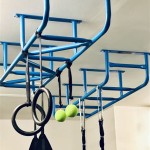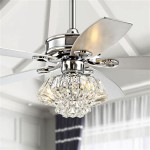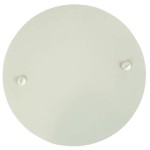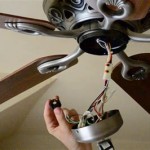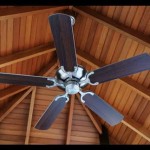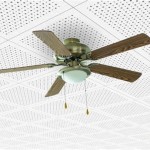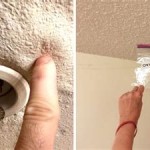Understanding Under Deck Ceiling Cost: A Comprehensive Guide
An under deck ceiling system is designed to transform the unused space beneath a raised deck into a dry, aesthetically pleasing, and functional outdoor living area. By installing a network of gutters, panels, and support structures, this system effectively redirects rainwater and snowmelt away from the area below, protecting it from the elements. Understanding the various factors contributing to the overall cost of this home improvement project is crucial for informed decision-making and accurate budgeting.
The cost of installing an under deck ceiling varies substantially based on several key parameters. These include the size and complexity of the deck, the materials used in the ceiling system, labor expenses, and any additional features or customizations desired. A homeowner can expect to invest a considerable amount of resources into this project; therefore, a meticulous assessment is crucial from the outset.
This article provides a comprehensive overview of the elements impacting the cost of an under deck ceiling system. By understanding these variables, homeowners can better estimate the likely expenditures and prepare for a successful installation process.
Key Cost Factors: Materials
The materials chosen for the under deck ceiling system significantly influence the overall project expense. Several options are available, each with its own set of advantages and drawbacks in terms of durability, aesthetics, and price. Common materials include aluminum, vinyl, and interlocking panels.
Aluminum is a popular choice due to its resistance to rust and corrosion. Aluminum systems are typically more expensive upfront but offer exceptional longevity with minimal maintenance. They are also lightweight, making them easier to install. Aluminum panels often come with baked-on enamel finishes that resist fading, chipping, and peeling, ensuring a long-lasting, attractive appearance.
Vinyl is a more budget-friendly alternative to aluminum. Vinyl systems are water-resistant and relatively easy to install, contributing to lower labor costs. However, vinyl may not be as durable as aluminum and may be more susceptible to damage from extreme weather conditions or direct impacts. Vinyl panels are also typically less resistant to fading compared to aluminum, potentially requiring more frequent painting or replacement over time.
Interlocking panels, often made of composite materials, offer a seamless and aesthetically pleasing appearance. These panels typically interlock to form a watertight seal, preventing water from penetrating the system. Composite panels can be more expensive than vinyl but offer a good balance of durability and visual appeal. Their durability often surpasses vinyl, making them a worthwhile investment for homeowners prioritizing longevity.
Beyond the primary ceiling material, the cost of supporting structures and drainage components should also be considered. These elements, often made of aluminum or galvanized steel, provide the structural framework and ensure effective water management. The quantity and complexity of these components will vary depending on the deck's size and design.
Specific materials may also include sealant, flashing, and specialized fasteners designed to withstand outdoor conditions and prevent water intrusion. Each of these elements contributes to the overall performance and longevity of the under deck ceiling system.
Key Cost Factors: Labor and Installation
Labor costs represent a significant portion of the total expense associated with installing an under deck ceiling system. The complexity of the installation, the size of the deck, and the prevailing labor rates in the homeowner's geographical area all influence these costs. It is advisable to obtain multiple quotes from reputable contractors to ensure competitive pricing and qualified workmanship.
The installation process typically involves several steps, including measuring and planning the layout, constructing the support structure, installing the drainage system, and attaching the ceiling panels. Complex deck designs with irregular shapes or multiple levels may require more intricate installation techniques, resulting in higher labor costs.
Experienced contractors bring specialized skills and knowledge to the project, ensuring proper installation and minimizing the risk of future problems. They can also advise on the best materials and techniques to suit the specific deck and environmental conditions. While DIY installation may appear to save money initially, it carries the risk of improper installation and potential damage to the deck or ceiling system, which can lead to costly repairs down the line.
Permitting is another factor that can influence the labor cost. Depending on local building codes, a permit may be required for the installation of an under deck ceiling. The contractor typically handles the permit application process, but the associated fees and inspection requirements can add to the overall project cost.
Removal and disposal of any existing materials under the deck may also contribute to labor costs. This may involve removing old decking boards, landscaping, or other debris that could interfere with the installation process. Properly preparing the area is crucial for ensuring a smooth and efficient installation.
Key Cost Factors: Deck Size and Complexity
The size and complexity of the deck are primary drivers of the overall cost. Larger decks require more materials and labor, naturally increasing the expenses. Furthermore, decks with intricate designs, such as multiple levels, curved edges, or unusual shapes, necessitate more complex installation techniques, which can further escalate the project cost.
Measuring the deck accurately is crucial for obtaining an accurate cost estimate. The contractor will typically measure the deck's length and width to determine the total square footage. This measurement is used to calculate the amount of materials needed and the estimated labor time.
Decks with obstructions, such as support posts or pipes, can also increase the complexity of the installation. The contractor may need to custom-cut panels or fabricate special components to accommodate these obstructions, adding to the labor cost. The density and configuration of joists and beams can significantly impact the attachment method and overall time to install the under deck ceiling.
The height of the deck above the ground also plays a role in the installation process. Decks that are significantly elevated may require additional safety precautions and specialized equipment, such as scaffolding or lifts, which can increase labor costs. Conversely, decks that are close to the ground may present challenges in terms of accessibility and drainage, also influencing the labor requirements.
Additional Cost Considerations
Beyond the core materials and installation costs, several other factors can impact the total expenditure associated with installing an under deck ceiling. These include lighting, ceiling fans, electrical outlets, and any other customizations or enhancements desired for the under deck space. These add-ons can significantly enhance the functionality and enjoyment of the area but can also add to the project's overall cost.
Installing lighting fixtures, such as recessed lights or string lights, can transform the under deck area into a usable space at night. The cost of lighting will depend on the type of fixtures chosen, the number of fixtures installed, and the electrical work required. Running electrical wiring can be a complex task that requires a qualified electrician, further increasing the expenses.
Ceiling fans can provide much-needed air circulation on hot days, making the under deck area more comfortable. The cost of a ceiling fan will vary depending on its size, features, and installation requirements. It's also important to ensure that the ceiling fan is specifically designed for outdoor use and is properly grounded.
Adding electrical outlets to the under deck area can provide convenient access to power for lighting, fans, or other appliances. The cost of installing electrical outlets will depend on the number of outlets installed, the proximity to the electrical panel, and any necessary wiring upgrades.
Homeowners may also consider adding features such as screens, curtains, or outdoor furniture to further enhance the comfort and functionality of the under deck space. These additions can add to the overall project expense but can also transform the area into a truly enjoyable outdoor living space. The cost of these features will depend on the quality, style, and quantity chosen.
Waterproof storage solutions might also be considered, allowing for safe storage of outdoor cushions, grilling equipment, or gardening tools. The cost of these additions adds to the investment in the under deck area.
Furthermore, unexpected issues arising during the installation process can lead to unforeseen expenses. For example, if the contractor discovers rotting wood or structural damage to the deck during the installation, repairs may be necessary before proceeding, which can add to the overall cost.
Budgeting for contingencies is advisable to mitigate the impact of unexpected issues. A contingency fund of 5-10% of the total project cost can help cover any unforeseen expenses that may arise.
Maintenance is another aspect that contributes to the total cost of ownership over time. While under deck ceiling systems are generally low-maintenance, periodic cleaning and inspections may be necessary to ensure their longevity and performance. Cleaning the panels and gutters regularly can help prevent clogs and maintain proper drainage. Inspecting the system for any signs of damage or wear and tear can help identify potential problems early on, preventing costly repairs down the line.
These inspections may involve checking for loose panels, damaged gutters, or signs of water leakage. Addressing these issues promptly can help prevent more significant problems from developing, extending the lifespan of the under deck ceiling system.

Under Deck Ceiling Cost Calculator Easy Accurate Detail

How To Easily Calculate Deck Ceiling Materials Decksdirect

How Much Does An Under Deck Ceiling Cost Trex Rainescape

The Ultimate Guide To Under Deck Ceiling Cost Riverview Decks

Dryspace Under Deck Water Management System Timbertech

Zip Up Material Estimator Ceilings And Underdeck Transform Your Outdoor Living Space

Panels For Zipup Underdeck Drainage Decksdirect

Under Deck Drainage System For Elevated Decks Trex Rainescape

Why You Should Install An Under Deck System

Under Deck Roof Ideas Econodek Waterproof Vinyl Decking
Related Posts
